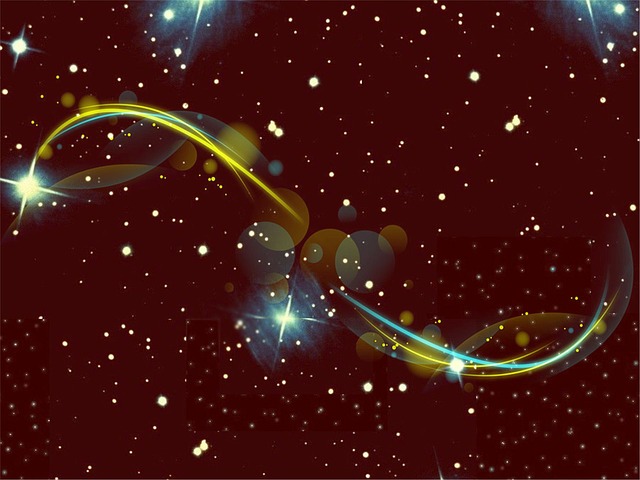When I was a kid, I told my sister that I was going to be a monster hunter when I grew up. The particular monster hunt that I discussed with her was one that involved the folkloric wendigo because we had just watched a mini-documentary on the cryptid. I recall imagining myself locked in a winter cabin far north while a horribly retched beast of indiscernible size and dimension smashed the walls and doors with its horrific claws.
I was the sole survivor…but not for long.
Of course, my wild juvenile (and naïve) narrative flight of fancy did not really speak to the complexity of the Wendigo folklore of the First Nations in Canada (and other folklore)—and there’s a lot there to research if you do a little digging.
Thus, for this post, we are going to analyze some of the lore around this monstrous creature by defining its characteristics and discussing some aspects of its legend to see how the strength of folklore influences culture and how it can explain the violent aspects of society.
Wendigo origins
The most pressing connotation of the wendigo is probably that of the abominable snowman—lurking in snowy forests in secluded regions around the world. However, as mentioned, the wendigo (or windigo) actually materialized out of the First Nations tribes in Canada. There are a variety of descriptions of the monster as well, but there is also consistency to how it is portrayed.
Oftentimes, the beast is described as having “glowing eyes, long yellowed fangs, terrible claws and (a) long tongue.” This description provides a terrifying picture of the monster: ostensibly a violent creature with “yellowish skin” and one that is “matted with hair or (has) decaying skin,” which gives me the impression of a large, rabid dog (Mingren).
As described by some sources, it is a “monster with some human characteristics” and it has been “historically associated with cannibalism, murder, insatiable greed, and cultural taboos against such behaviors,” which paints a menacing portrait (Legends of America). Of course, folklore is passed down and changed throughout generations both orally and now in the modern age through multiple medias; and it also adapts to the dogmas of the local culture, so there are myriad definitions and descriptions of the beast.
One online encyclopedia tells us that the windigo “legend existed in Algonquian oral history for many centuries,” and previous to the arrival of Europeans on the continent. In 1722, a “French traveler Bacqueville de la Potherie” recorded the first appearance of the word, but it appeared as “Onaouientagos.” The portentous nature of the beast was perhaps hidden at the time, but through oral storytelling and sightings…we now are more familiar with an abominable snowman-type beast.
A deeper meaning
On the surface, the wendigo’s denotation is that of a horrible monster, often huge and ravenous. But, connotatively, we have something a bit more nuanced: a representation of natural phenomena and the power (and danger) of nature. It’s often brutal and fearsome depictions could lead one to believe that it is a beast not meant to be trifled with—a naturalist writer’s thesis in physical form. It is the wind, the trees, the hills…the snow.
When not compared to nature (or representative of it), the wendigo represents the aforementioned characteristics of greed, cannibalism, and murder: “… the word also functions symbolically to connote gluttony and the ‘image of excess’” writes Marlene Goldman in “Rewriting Apocalypse in Canadian Fiction.” When new arrivals emerged from Europe, an easy way to explain their xenophobic, homicidal mania was to liken it to a beast of legend: why else would the invaders be so ruthless and bloodthirsty?
Additionally, the legend of the wendigo explains a familiar face’s unexplained madness and violence. An uncle murdered your aunt and cut her to bits? Well, if he had never even seemed remotely violent, wouldn’t the supernatural be a plausible answer in a society that worshipped both kind and unkind spirits?
Remember: the cultures of days gone, whether those of antiquity or even farther back, needed to explain the world to their children and through an oral medium, so creating a boogeyman helped people understand the bad-faith actors in other societies (and sometimes in their own) who were feverishly destroying cultures and propagating a new narrative of civilized life.
And, aptly, in an article title “Boogie Men” on Mohawk Nation News, writer kahntineta points out that the Windigo is “sick because it’s cut off from its roots” and that “its hunger knows no bounds … When it sees something, it wants to own it.”
The author refers to this thirst as “Windigo Psychosis” or “Owistah disease,” which is the insatiable lust for destruction that resulted in the genocide of many cultures and people when imperialism came to the shores of North America; though, with that being said, it is clear that the Wendigo is not just a literal snow beast that lurks in the snowy parts of the world, but, rather, it is a metaphor for the actions committed by a person or society that is deemed vile or unlawful. In other words, those who murder, or rape, or cannibalize another has the Wendigo disease, and societies that allow genocide and the mass destruction of cultural heritage go unchecked are consumed by this psychosis as well.
As kahntineta states: “They were unchained from the morality of human feeling” (Mowhawk Nation News).
Conclusion
It is my belief that symbolism is heavy in the hands of the believer, whether they know it or not. What I mean by this is that believers in the supernatural—ghosts, goblins, and werewolves, etc.—possess a very important interpretation of the world: an interpretation that symbolizes reality and places it into a contextual framework.
At first, we might say that this is a dangerous outlook, and it certainly can be, as a belief in the unverifiable attaches itself to conspiracy or downright lunacy. However, a healthy respect for folklore and oral tradition can create a sort of unintentional explanation of reality. That is to say, the Bigfoot can represent political dissidence and the rejection of a peremptory government, or that the Paulding Light in Michigan is not just a ghostly light (or lights) bouncing in the sky, but represents our society’s reverence for the dead and, more specifically, those cruelly cut down too soon.
Sure, we can believe that Bigfoot is actually roaming the woods, or that an undead brakeman is wandering around in the Upper Peninsula of Michigan, but that doesn’t create any new understanding for society. Likewise, we can believe in a ten-foot-tall monster that roams the Canadian outback who eats people, or we can understand that these uncertainties echo the same fears and superstitions we see in the United States and elsewhere, regardless of its prominence (Bigfoot, chupacabra, Loch Ness Monster, The Jersey Devil, etc.).
The wendigo is no different.
As posited by Katarzyna Jusiak in “The embodiment of the taboo: the images of Wendigo in literature and their rendition in modern media,” the wendigo is a multifaceted creature whose appearance, and meaning, is dependent on the presenter, whether that be the Canadian image, which adheres to a “traditional image known from oral culture,” or the image of the wendigo as a predator, “preying on grief of those who lost someone loved instead of the necessity of devouring human meat in the wilderness…” (Jusiak 31).
The Wendigo embodies the worst, most fragmented aspects of our culture, but it also forces us to reflect on those aspects to aspire to greater heights of morality.
Works Cited
“Wendigo – Flesheater of the Forests – Legends of America.” Elite CafeMedia Publishers, 1 May 2022, legendsofamerica.com/mn-wendigo/.
Goldman, Marlene. “Rewriting Apocalypse in Canadian Fiction.” McGill-Queen University Press 2005. Accessed 26 Jan. 2022.
Jusiak, Katarzyna. “The Embodiment of the Taboo: The Images of Wendigo in Literature and Their Rendition in Modern Media.” Academia, 2015.
Kahntineta. “Boogie Men.” Mohawk Nation News. March 14, 2013. Web: http://mohawknationnews.com/blog/tag/windigo-psychosis/
Mingren, Wu. “What is a Wendigo? The Beast with an insatiable Hunger for Human Flesh.” Ancient Origins. Dec. 28, 2022. Web: https://www.ancient-origins.net/unexplained-phenomena/wendigo







